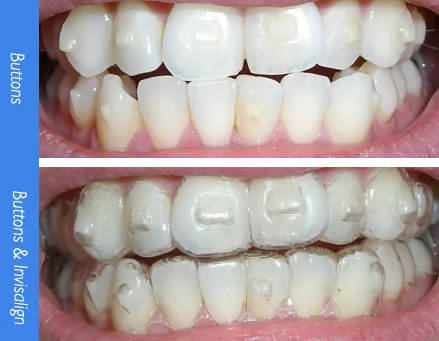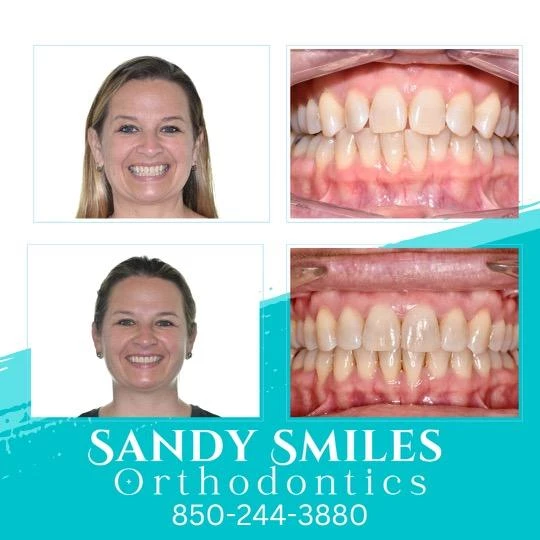Keeping Oral Health While Making Use Of Invisalign: Tips for a Smooth Experience
Keeping Oral Health While Making Use Of Invisalign: Tips for a Smooth Experience
Blog Article
Invisalign vs. Conventional Dental braces: Which Option Is Right for You?
When taking into consideration orthodontic treatment, the choice in between Invisalign and standard braces provides several important elements that warrant mindful analysis. Invisalign uses a discreet option with detachable aligners, while standard dental braces supply an extra visible yet reliable solution for serious imbalance. Each option includes unique advantages and drawbacks associated with aesthetics, convenience, therapy duration, and expense. Recognizing these subtleties is important for making an informed decision that lines up with your personal choices and way of living. The inquiry continues to be: which alternative will finest satisfy your orthodontic requirements and expectations?
Introduction of Therapy Options

In comparison, typical braces contain steel braces and wires that are bonded to the teeth. This technique uses continuous stress in time to achieve positioning. While reliable for intricate orthodontic issues, standard dental braces call for regular brows through for adjustments and can present obstacles in keeping oral hygiene because of the problem of cleansing about brackets and wires.
Both options have their qualities, and the choice commonly rests on particular oral conditions, lifestyle preferences, and client conformity. Inevitably, getting in touch with an orthodontic expert is critical for figuring out one of the most suitable therapy strategy customized to specific needs. Comprehending the subtleties of each alternative can considerably affect the total success of orthodontic treatment.
Visual Considerations
A considerable aspect affecting the selection in between Invisalign and typical braces is the aesthetic appeal each treatment uses. Invisalign aligners are crafted from clear plastic, making them practically unseen when worn. This very discreet look is specifically interesting grownups and teenagers who may feel uncomfortable about their orthodontic therapy. The capability to keep an all-natural smile throughout the placement procedure can dramatically boost the person's self-confidence in expert and social settings.
In comparison, conventional braces include metal brackets and cables, which can be extra noticeable. While advancements in orthodontic technology have brought about the advancement of smaller sized braces and tinted elastics, standard braces still keep a more obvious profile. For some individuals, the presence of braces may hinder them from seeking needed treatment.
Eventually, the selection between Invisalign and standard dental braces might rest on individual preferences pertaining to appearances. Patients who focus on discretion often lean towards Invisalign, while those who are much less worried about presence might choose typical braces. Understanding the visual implications of each choice is critical for making an educated choice that lines up with one's way of life and choices.
Convenience and Convenience

In terms of benefit, Invisalign aligners are removable, making it possible for individuals to enjoy their favorite foods without constraint and keep ideal oral hygiene. Cleaning and flossing are streamlined, as the aligners can be gotten during these regimens, whereas standard braces require mindful navigating around cords and brackets.
In contrast, conventional braces require routine modifications, making them much less hassle-free for those with hectic timetables. In general, the convenience and ease of Invisalign make it an appealing option for several other individuals seeking orthodontic treatment.
Therapy Period and Effectiveness
While both Invisalign and standard dental braces are efficient in dealing with oral misalignments, the web duration of treatment can differ considerably between both options. Commonly, Invisalign treatment can take anywhere from 12 to 18 months, depending upon the intricacy of the instance. The clear aligners function by progressively shifting teeth right into their desired settings, and routine follow-ups with an orthodontist aid ensure development stays on course.
In contrast, traditional dental braces usually require a longer commitment, typically ranging from 18 months to 3 years. This results from their fixed nature and using brackets and wires, which can be much more efficient for intricate instances and extreme imbalances (Invisalign). The therapy effectiveness of traditional braces is well-documented, as they enable specific changes and better control over tooth activity
Inevitably, the selection in between Invisalign and typical braces may depend upon both the anticipated treatment duration and the particular dental issues handy. Consulting with an orthodontist is critical, as they can offer tailored recommendations based upon specific requirements, making sure the chosen approach lines up with preferred results and durations.
Expense Comparison and Insurance Coverage Options
Cost plays a significant function in the decision-making process for people considering orthodontic therapy, whether choosing Invisalign or traditional dental braces. Typically, the cost of Invisalign varieties from $3,000 to $8,000, while conventional dental braces typically cost in between $2,000 and $6,000. Elements affecting these costs consist of the complexity of the instance, the period of treatment, and geographical area.
Lots of oral insurance plans offer partial insurance coverage for orthodontic treatments, however the specifics can differ extensively. Usually, traditional braces may be a lot more regularly covered by insurance plans compared to Invisalign, which some insurance companies classify as an aesthetic procedure.
Additionally, a number of orthodontic techniques offer versatile settlement plans, making both treatment options a lot more accessible. Clients must ask about potential funding options and discount rates for in advance payments. Assessing the complete price, including insurance coverage advantages and layaway plan, is important for making a notified decision that straightens with both aesthetic choices and budget factors to consider.

Final Thought
In summary, you can check here the selection between Invisalign and traditional dental braces depends upon multiple variables, including aesthetic preferences, comfort, treatment duration, and expense. Invisalign uses a discreet, removable option that assists in dental hygiene and dietary flexibility, while typical dental braces might be a lot more suitable for complex oral problems and typically come at a lower price factor. Inevitably, consultation with an orthodontist is vital to examine private situations and identify the most ideal treatment option for attaining ideal dental placement.
When thinking about orthodontic treatment, the selection between Invisalign and traditional dental braces provides several important factors that merit mindful examination.Comparing Invisalign and conventional braces reveals distinctive therapy alternatives for orthodontic improvement.While both Invisalign and typical dental braces are efficient in fixing dental imbalances, the duration of therapy can vary considerably between the 2 choices.Cost plays a substantial duty in the decision-making procedure for individuals thinking about orthodontic treatment, whether choosing for Invisalign or traditional braces.In recap, the option between Invisalign and typical braces hinges on several variables, including aesthetic choices, convenience, therapy duration, and cost.
Report this page